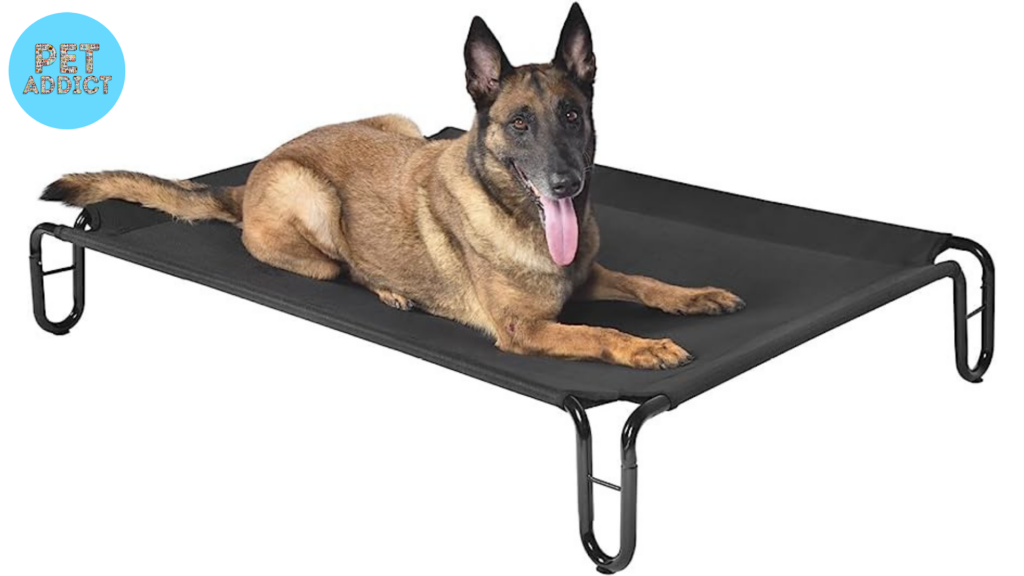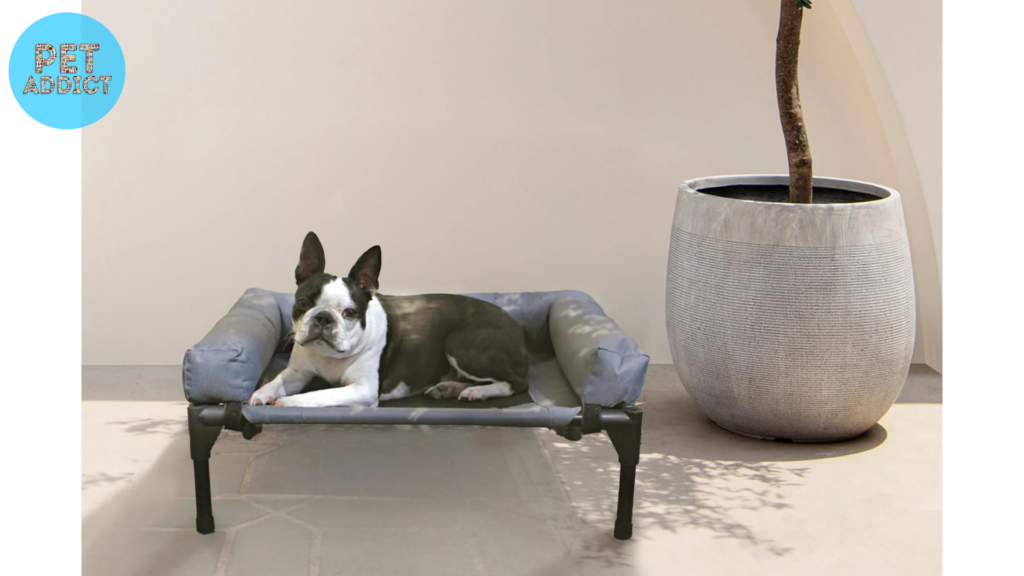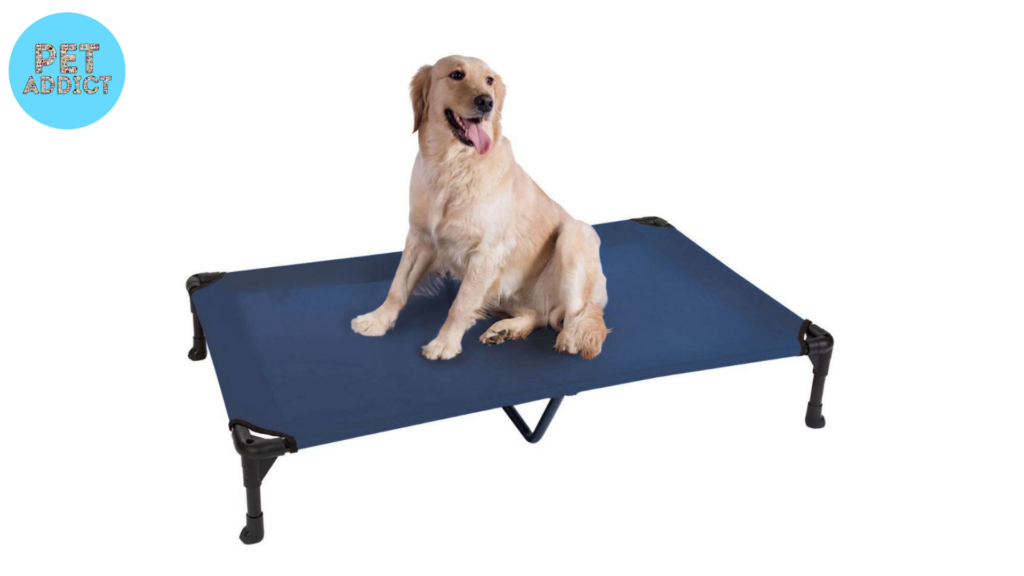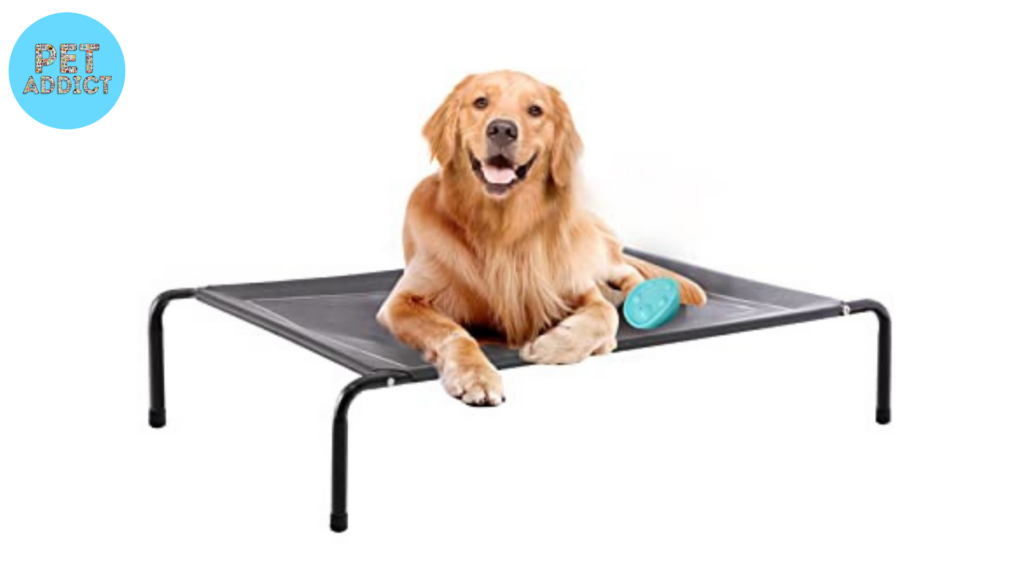Introduction
When it comes to our furry friends, ensuring their comfort and well-being is of utmost importance. One essential aspect of their daily lives is sleep, and just like humans, dogs need a comfortable sleeping arrangement. In this article, we will explore the concept of elevated dog beds and their numerous benefits. Whether you have a small or large dog, an elevated bed can provide them with the perfect resting spot. So, let’s dive in and discover why elevated dog beds are a fantastic choice for your canine companion.
PetAddict.net – The best place where you can find everything about your pet!
Benefits of Elevated Dog Beds
Elevated dog beds offer several advantages over traditional floor-level beds. These benefits include enhanced comfort and support, improved airflow and ventilation, protection from cold and damp surfaces, reduced joint pressure and pain, and prevention of pest infestations. Let’s delve into each of these benefits in more detail.
One of the primary advantages of elevated dog beds is the enhanced comfort they provide. These beds typically feature a durable frame and a supportive sleeping surface, such as a mesh or fabric material. This design allows for even weight distribution, relieving pressure on your dog’s joints and providing more restful sleep.

Moreover, elevated dog beds offer improved airflow and ventilation. The raised design allows air to circulate beneath the bed, preventing heat buildup and keeping your dog cool during warmer seasons. This feature is particularly beneficial for breeds prone to overheating or dogs with thick coats.
In addition to comfort and ventilation, elevated dog beds protect your furry friend from cold and damp surfaces. By elevating them off the ground, these beds help insulate your dog from chilly floors, preventing discomfort and potential health issues. Furthermore, they keep your pet away from damp areas, reducing the risk of developing skin irritations or infections.
Another significant advantage of elevated dog beds is the reduced joint pressure and pain they provide. For dogs with arthritis or joint conditions, sleeping on hard surfaces can exacerbate their discomfort. Elevated beds offer a cushioned and supportive surface, relieving pressure on their joints and promoting better mobility.

Lastly, elevated dog beds help prevent pest infestations. By keeping your dog off the ground, these beds minimize the chances of ticks, fleas, and other insects latching onto your pet. This added protection is especially crucial for dogs that spend time outdoors or in areas prone to pests.
Factors to Consider When Choosing an Elevated Dog Bed
When selecting an elevated dog bed, there are several factors to keep in mind to ensure you choose the right one for your furry companion. Consider the size and weight capacity, material and durability, ease of cleaning, portability, and storage, and price range and budget.
Firstly, make sure to choose an elevated bed that suits your dog’s size and weight. Check the weight capacity of the bed and ensure it can comfortably support your pet. Consider the bed’s dimensions and ensure there is ample space for your dog to stretch out and move around.
Secondly, pay attention to the material and durability of the bed. Look for a sturdy frame made from materials such as metal or high-quality plastic. The sleeping surface should be durable, tear-resistant, and able to withstand your dog’s movements.

Next, consider the ease of cleaning the bed. Dogs can be messy at times, so opt for a bed with a removable and machine-washable cover. This feature makes it easier to keep the bed clean and fresh, ensuring your dog has a hygienic sleeping environment.
Portability and storage are also essential factors to consider. If you travel frequently or need to move the bed around, choose a lightweight and foldable design. This way, you can conveniently transport the bed and store it when not in use.
Lastly, consider your budget and the price range of elevated dog beds. While it’s essential to invest in a quality bed, there are options available to suit various budgets. Compare different brands and models to find the best value for your money.
Different Types of Elevated Dog Beds

There are various types of elevated dog beds to choose from, each offering unique features and benefits. Let’s explore some of the most popular options available in the market.
- Cot-style beds: These beds feature a sturdy frame with a fabric sleeping surface stretched across it. They provide excellent support and airflow, making them suitable for both indoor and outdoor use.
- Hammock-style beds: Hammock-style beds have a fabric surface that hangs between two opposing frames or attachments. These beds offer a comfortable and suspended sleeping experience, ideal for dogs who enjoy gentle rocking motion.
- Raised platform beds: Raised platform beds feature a solid platform or deck with legs supporting it. They provide a more substantial and stable sleeping surface, perfect for larger breeds or dogs with specific support needs.
- Canopy beds: Canopy beds are similar to cot-style beds but feature a removable canopy or shade. These beds provide extra protection against the sun’s rays or outdoor elements, making them great for sunny or rainy climates.
When choosing a type of elevated dog bed, consider your dog’s preferences, size, and specific requirements. Some dogs may prefer the openness of cot-style beds, while others may enjoy the coziness of hammock-style or canopy beds. Select the option that best suits your furry friend’s needs.
How to Properly Introduce an Elevated Dog Bed to Your Pet

Introducing a new bed to your dog requires patience and a gradual approach. Follow these steps to ensure a smooth transition and a positive association with the elevated dog bed:
- Gradual introduction and familiarization: Place the bed in a familiar and comfortable area where your dog spends time. Allow them to explore and sniff the bed at their own pace.
- Placing the bed in a preferred location: Observe where your dog naturally prefers to rest and sleep. Move the elevated bed to that location, increasing the chances of your dog accepting and using it.
- Positive reinforcement and encouragement: Reward your dog with treats, praise, or their favorite toys when they show interest in the bed or lie on it. Positive reinforcement will create a positive association with the new sleeping spot.
- Ensuring a safe and secure environment: Make sure the surrounding area is safe and free from hazards that may cause your dog to feel anxious or uncomfortable. Create a peaceful and secure space for them to relax.
By following these steps, you can help your dog feel at ease with their new elevated bed and encourage them to use it regularly.
Maintenance and Care Tips for Elevated Dog Beds
To ensure your elevated dog bed remains clean, comfortable, and in good condition, it’s essential to follow proper maintenance and care guidelines. Here are some tips to keep in mind:
- Regular cleaning and washing: Remove the bed’s cover and wash it regularly according to the manufacturer’s instructions. This practice helps eliminate odors, dirt, and bacteria, maintaining a hygienic sleeping environment.
- Checking for wear and tear: Inspect the bed regularly for any signs of wear and tear, such as frayed fabric or loose screws. Address these issues promptly to prevent further damage and ensure the bed remains safe for your dog.
- Replacing worn-out parts or covers: Over time, the bed’s cover or parts may wear out or become damaged. If necessary, replace these components to maintain the bed’s functionality and comfort.
- Storing the bed during extreme weather conditions: If you live in an area with harsh weather conditions, consider storing the elevated bed indoors during extreme heat, cold, or heavy rain. This practice prolongs its lifespan and prevents unnecessary damage.
By implementing these maintenance tips, you can ensure your dog’s elevated bed remains clean, comfortable, and functional for an extended period.
Addressing Common Concerns About Elevated Dog Beds
Despite the numerous benefits of elevated dog beds, some pet owners may have concerns or questions. Let’s address a few common queries to provide a comprehensive understanding of these beds:
- Is an elevated dog bed suitable for all dog breeds?
- Yes, elevated dog beds are suitable for dogs of all breeds and sizes. However, consider the bed’s weight capacity and dimensions to ensure it accommodates your dog comfortably.
- Can elevated beds cause joint problems?
- No, elevated beds are designed to provide support and relieve joint pressure. They can be beneficial for dogs with joint issues or arthritis, promoting better rest and reducing discomfort.
- What are the weight limits for elevated beds?
- The weight limits vary depending on the specific bed model. Check the manufacturer’s specifications to ensure the bed can adequately support your dog’s weight.
- Are elevated beds suitable for outdoor use?
- Yes, many elevated beds are suitable for outdoor use. Look for beds made from weather-resistant materials and ensure they have sturdy construction to withstand outdoor elements.
- How long do elevated dog beds typically last?
- The lifespan of an elevated dog bed depends on the quality of materials, construction, and usage. With proper care and maintenance, a high-quality elevated bed can last for several years.
Conclusion
Providing a comfortable sleep environment for your furry friend is essential for their overall well-being. Elevated dog beds offer numerous benefits, including enhanced comfort and support, improved airflow and ventilation, protection from cold surfaces, reduced joint pressure, and prevention of pest infestations. When choosing an elevated dog bed, consider factors such as size, material, cleaning ease, portability, and budget. Properly introducing the bed to your pet and following maintenance tips will ensure its longevity and your dog’s continued comfort. So, give your canine companion the gift of restful sleep with an elevated dog bed.
FAQs
Q1. Can I use an elevated dog bed for my puppy?
- Yes, elevated dog beds are suitable for puppies as well. Just make sure to choose an appropriate size and ensure the bed provides sufficient support.
Q2. Are elevated dog beds suitable for older dogs?
- Absolutely! Elevated dog beds can be especially beneficial for older dogs with joint issues or arthritis, as they offer better support and relieve pressure on their joints.
Q3. Can I leave an elevated dog bed outdoors?
- While many elevated dog beds are designed for outdoor use, it’s essential to consider the bed’s construction and materials. Opt for weather-resistant options and ensure the bed remains in good condition.
Q4. Can I wash the cover of an elevated dog bed in a washing machine?
- Yes, most elevated dog bed covers are machine washable. However, always check the manufacturer’s instructions for specific care guidelines.
Q5. Are elevated dog beds suitable for dogs of all sizes?
- Yes, elevated dog beds are available in various sizes to accommodate dogs of different sizes and breeds. Make sure to choose a bed with an appropriate weight capacity for your dog.




